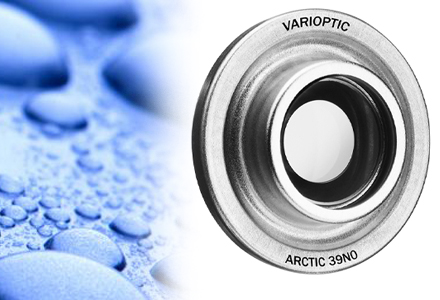 The continued growth of industrial automation and inspection has seen a corresponding increase in demand for fast, durable, and reliable vision systems. Government initiatives promoting the implementation of smart factories are also fueling the need for improved machine vision. Liquid lenses are an essential component to improving the speed, efficiency, and integration of machine vision.
The continued growth of industrial automation and inspection has seen a corresponding increase in demand for fast, durable, and reliable vision systems. Government initiatives promoting the implementation of smart factories are also fueling the need for improved machine vision. Liquid lenses are an essential component to improving the speed, efficiency, and integration of machine vision.
What is Liquid Lens Technology?
Liquid lenses use an electrowetting process that results in autofocus that is superior to mechanical lenses. The lens is a sealed cell with oil and water contained. Electrical charges are used to activate a film that changes the shape of the oil. This change in the oil drop’s shape bends the light and brings the image into focus quickly and accurately, turning it into an effective lens solution.
Liquid lenses don’t have any moving parts that wear out and installation, setup, and maintenance are simplified. Liquid lenses have extremely fast response times (100 ms or less) and good optical quality (up to 5 megapixels). Because there are no moving parts, they can adjust for large steps in focus as quickly and as accurately as small steps.
Corning Varioptic lenses have low power consumption and can be used in 24/7 operations. They are compact in size and operate without any disruptive noise. The lenses even incorporate all the necessary electronic components to drive them. Only a low-voltage DC power supply and communication interface for focus control is required.
How Are Liquid Lenses Being Used in Production?
Fast-moving assembly lines require machinery that works quickly enough to meet customer demands. A machine vision system equipped with liquid lenses is used to conduct quality control inspections, scan barcodes, or sort items with various characteristics. Traditional mechanical lenses would need to move and adjust, delaying production time to refocus on each passing item.
High production environments also don’t need the multiple traditional lenses that would be required on a production line. Liquid lens technology allows cameras to adapt to changes in working distances automatically with a greater depth of focus. Liquid lenses can also function at any orientation. They aren’t impeded by gravity, vibrations, or shocks, making them incredibly durable.
What Are Some Other Applications for Liquid Lenses?
Liquid lens technology is improving logistics related to e-commerce. Liquid lenses are used in both fixed-mount and handheld barcode readers. Barcode scanning for parcel tracking occurs at multiple times throughout shipment. Liquid lenses are being used to scan items at pickup with handheld scanners, then scanned at logistics centers with fixed scanners, and finally on delivery with handheld scanners again. These lenses make the tracking of packages fast, accurate, and reliable.
Some other areas liquid lenses are being used is in the capture of biometric data and in video recording with object distance variations. Liquid lenses work with small and large sensor formats and work in visible light and near infrared light, making them extremely versatile in all environments.
To discuss liquid lens technology for your application, speak with the machine vision experts at Phase 1 Technology.
